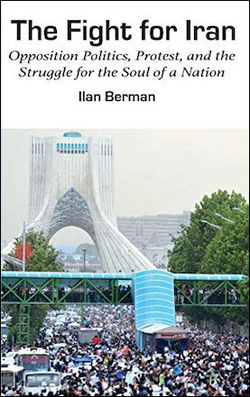 Berman, senior vice president at the American Foreign Policy Council, has usefully and briefly compiled information on leading Iranian opposition groups and the challenges facing them in this collection of previously published essays. His interest derives from the possibility that "these individuals and forces could very well end up inheriting the Iranian nation."
Berman, senior vice president at the American Foreign Policy Council, has usefully and briefly compiled information on leading Iranian opposition groups and the challenges facing them in this collection of previously published essays. His interest derives from the possibility that "these individuals and forces could very well end up inheriting the Iranian nation."
Berman begins by summing up key characteristics of four external oppositionists. The last shah's son, Reza Pahlavi, stands out for his vision "of nonviolent resistance to Iran's clerical regime." In contrast, the Mujahideen-e Khalq, the most high profile and controversial of exile groups, "is convinced that the Iranian regime is simply too brutal, too entrenched and too invested in maintaining its hold on power to be removed solely by peaceful means. The alternative could well be armed resistance, and here the MeK holds a distinct advantage."
Then, there is the Iranian-American activist, Masih Alinejad, who focuses her social media prowess on combating the mandatory women's head-covering in Iran aiming "to harness this discontent into a broader, crowdsourced anti-regime movement." Lastly, Mariam Memarsadeghi and her Tavaana initiative hope
to build capacity within Iranian society through civic education and public dialogue on topics like women's rights, Islamic reform and democratic values, issues which remain generally taboo within the Islamic Republic.
A survey of opposition within Iran follows. Here, Berman tells about Hamava, or the Coalition of Committed for a Secular Democratic Iran, within the context of the radicalization that has taken place since 2009:
Back then, there remained some semblance of "loyal opposition" which sought reform of the Islamic Republic rather than its total dismantlement. ... Today, by contrast, Iranians are overwhelmingly united in their desire for a fundamental change in government.
Finally, Berman sketches out some of the challenges facing oppositionists: the regime's shutting down of the internet, the populations many and deep ethnic divisions, disagreements over what will come after the mullahs, a generational tension, and the power of the Iranian Revolutionary Guard Corps.
Readers cannot get a quicker, better briefing than The Fight for Iran.
